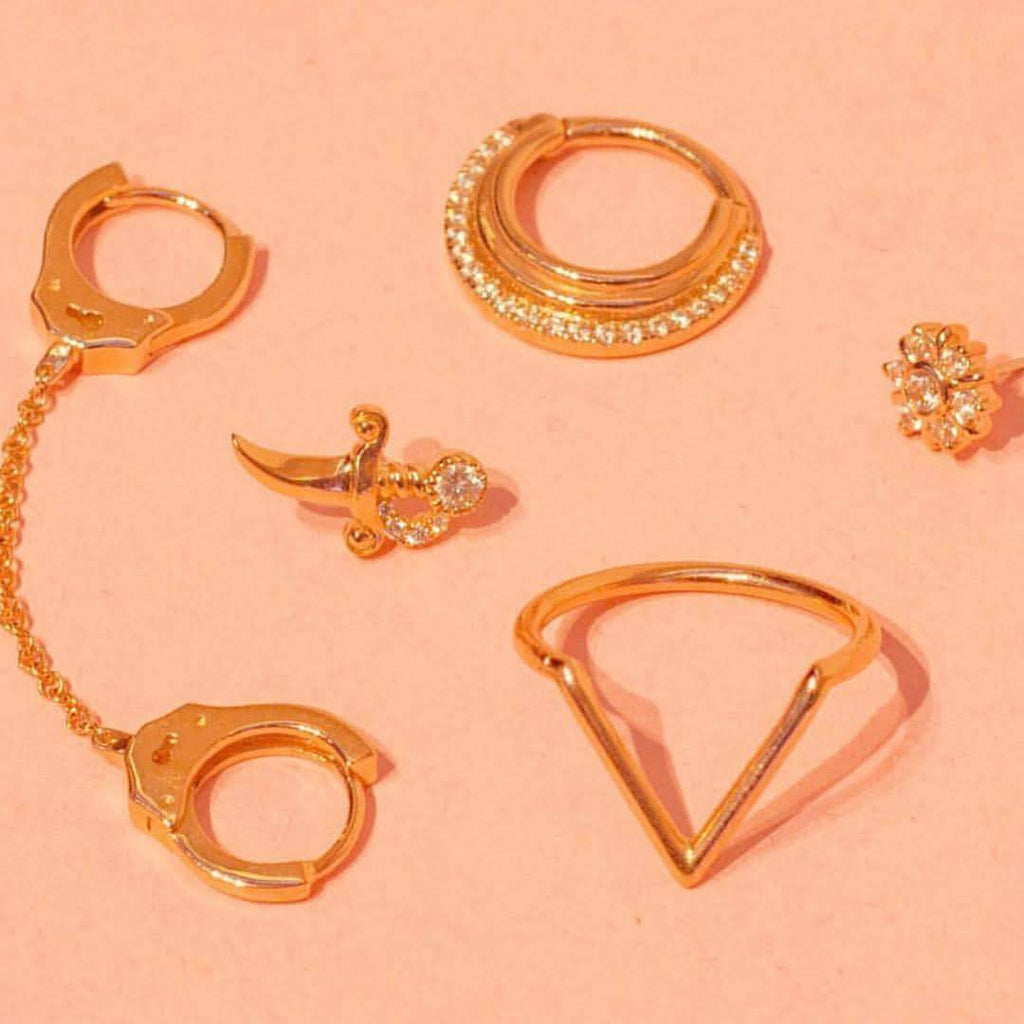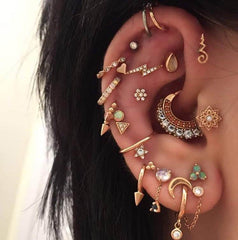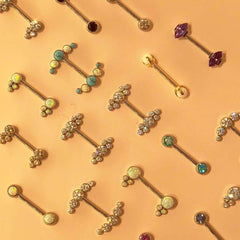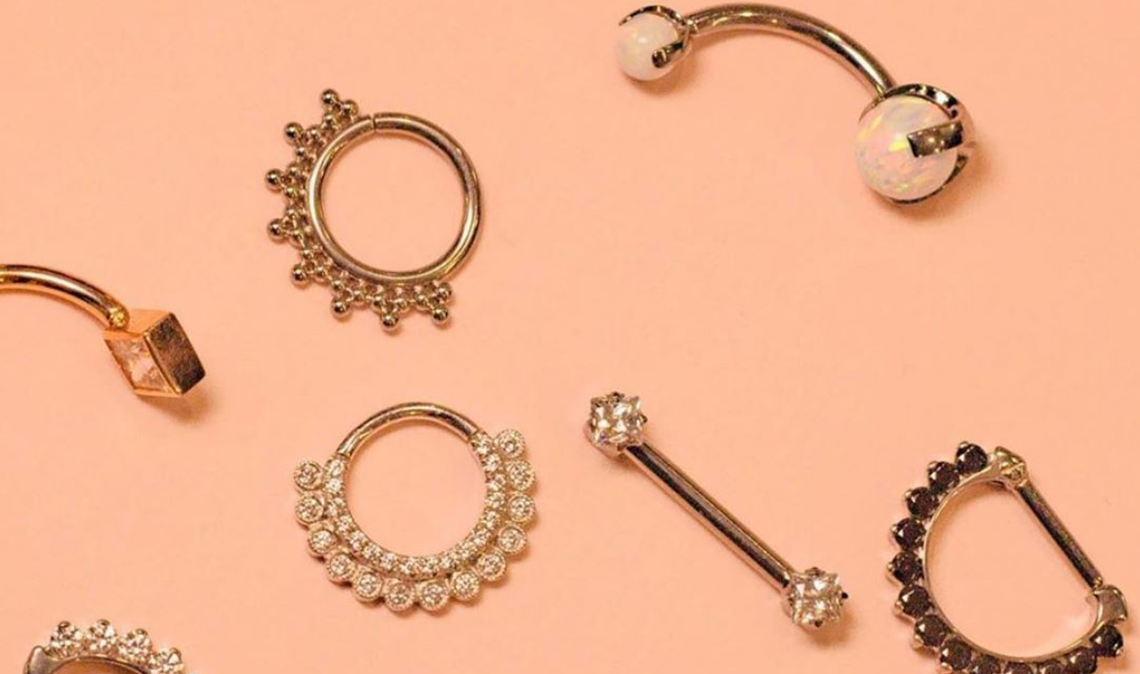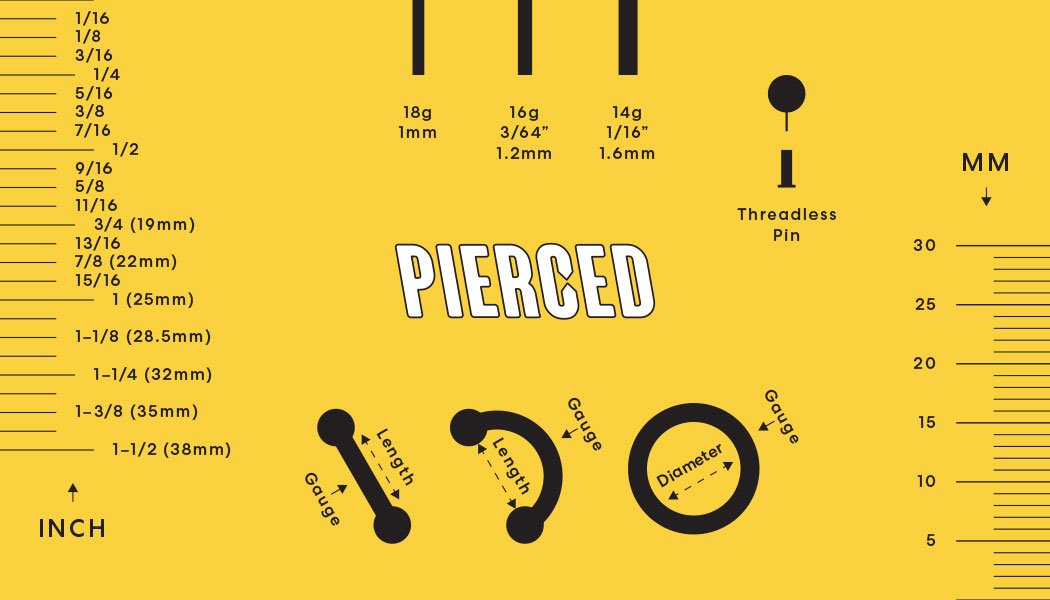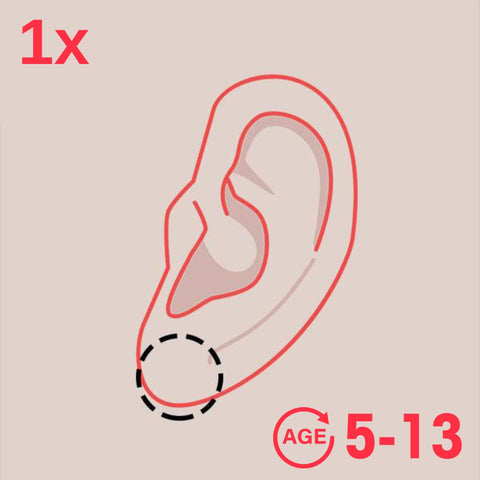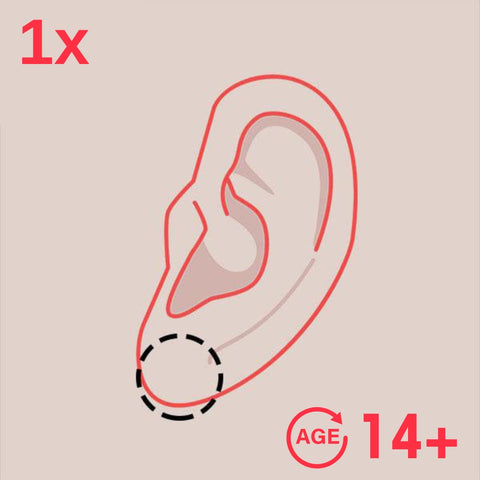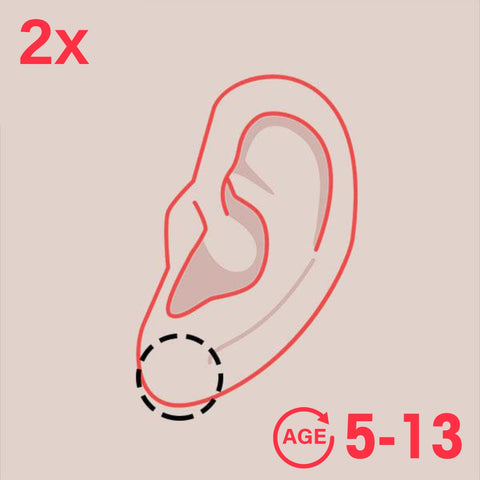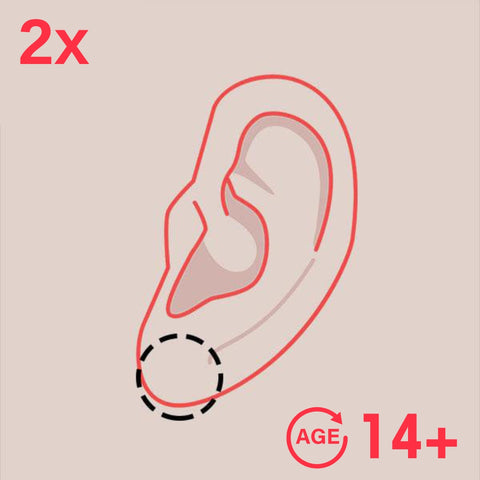Nose rings, chains, barbells—if you’re looking to accessorize, body jewelry offers plenty of choices.
But what metals are best? What types of jewelry is available? And how do you know your piercer has sanitized your new bling before putting it in your skin?
Keep reading. We’re about to answer all your body jewelry questions and help you take the next step towards getting the body piercing and jewelry combo you’ve been waiting for.
Types of body jewelry to consider
Captive bead rings and hoops
Captive bead rings and hoops are some of the most versatile forms of body jewelry. Hoops are just a circle of fine metal, while captive bead rings include a bead or jewel held in by pressure onto the hoop. These can be both edgy and elegant at the same time.
Captive bead rings and hoops can be worn in almost any healed piercing.
Barbells, studs, bones and screws
Barbells, flatbacks, bones, and screws all accomplish the same effect, although we do not recommend or sell bones as they are known to be very damaging to both healed and fresh piercings. They each have a gem or a ball at one or both ends, and allow the bar to pass through the piercing. The bar “vanishes,” leaving only the gem visible.
Barbells can be worn in almost any piercing. Flatbacks are generally used only in ear piercings.
Chains
Chains take body jewelry to the next level. Chains drape seductively across your piercing, adding an interesting twist to any outfit. Some chains connect to bellybutton piercings and run across the stomach.
How do you clean body jewelry?
It’s important that your piercer completely sanitize your body jewelry as well as ensuring that needles are single use needles before piercing. With proper and safe procedures it will avoid any risk of hepatitis as well as any blood borne illnesses.
At Pierced, we use a device known as an “autoclave” to ensure your piercings are sanitary.
What is autoclaving?
Autoclaving is a high-quality sanitation method that destroys all bacteria and harmful organisms from your body jewelry.
An autoclave is a boxlike or cylindrical machine. After jewelry has been placed inside the autoclave, it fills with high-temperature steam for a specific amount of time. This completely kills any living organism that could harm you on the surface of your jewelry and eliminates risk of infectious disease.
How can I clean my body jewelry at home?
If you don’t have an autoclave, don’t worry. Most people don’t have an autoclave at home; they cost thousands of dollars and require special training to operate.
If you’re not worried about hepatitis or other life-altering diseases—simply hoping to avoid smaller infections—you can use rubbing alcohol, alcohol-free mouthwash, or even antibacterial soap to clean your jewelry.
What’s the best material for body jewelry?
Jewelry can be made from almost any material. However, a few materials are especially easy to keep clean (while remaining hypoallergenic).
Gold
Gold is one of the most popular hypoallergenic metals since different jewelry will have different karat weight though—you won’t find pure gold jewelry anywhere. Pure gold is too soft to retain any specific shape. Because of this, all gold jewelry is a mix of gold and “other metals.” You could be allergic to some of the “other metals” in your gold jewelry, so if you notice irritation in your piercing, don’t be surprised.
Titanium
Our favourite piercing material is titanium. Titanium lasts seemingly forever (Sia sang “I am titanium,” not “I am fine china,” so that should be your first clue). There is ASTM coding for proper implant grade jewelry to tell it apart from other not good titaniums out there. With the proper implant grade titanium it’s durable, pure, and hypoallergenic.
Glass
Rarely, our clients prefer glass jewelry. Glass is beautiful, elegant, and safe. It can be cleaned in an autoclave, and it’s hypoallergenic; unfortunately, it’s also fragile. For this reason, we advise clients to be selective in wearing glass earrings.
Stainless steel
Stainless steel is a common, affordable, attractive metal for piercings.Easy to clean and maintain, and keeps its color over time. Unfortunately, stainless steel jewelry is sometimes mixed with a common metal allergen: nickel. If you’re allergic to nickel, stay away from stainless steel jewelry at all times until your piercing has healed, especially if you have nickel sensitivity, it is unwise to ever wear jewelry containing nickel.
Summary
Body jewelry is a fantastic way to personalize your look. From simple flatbacks to fancy chains, there are as many options as you have moods in a day.
Now you know the best ways to keep your jewelry, you also know a little more about what to look for in good quality body jewelry and avoid certain types of jewelry. The only question that remains: What will you pierce next? And who will you get to do it?
If you don’t already have a piercer that you trust, and are in the Newmarket, ON area, head on over or give the team at Pierced.co a call today. Their friendly and experienced team is ready and waiting to help.
Piercing Studios Near You
Mississauga
Square One Shopping Centre
100 City Centre Drive, Mississauga,
ON L5B 2C9
Phone
+1 (905) 232 -7226
Need an Experienced Piercer in Mississauga?
Working with an experienced piercer can make all the difference when it comes to your piercing experience. If you’re in the Mississauga, Ontario area and have any questions about ear piercing, body piercing or jewelry, give us a call or stop by our piercings studio today. We’d love to help walk you through what to expect and help you choose the right option.
